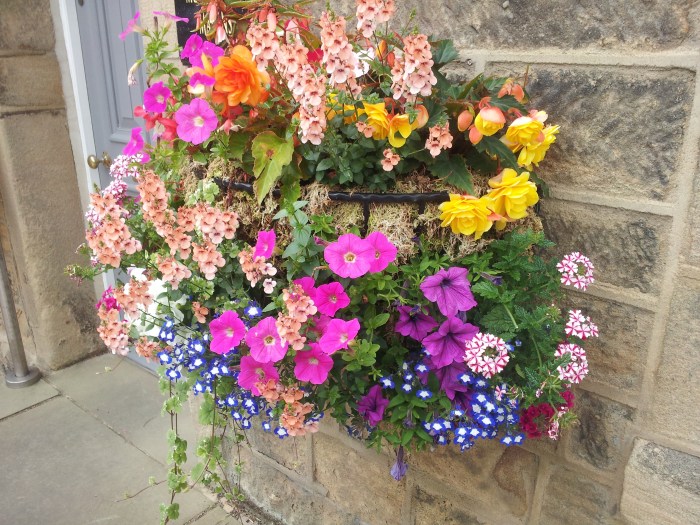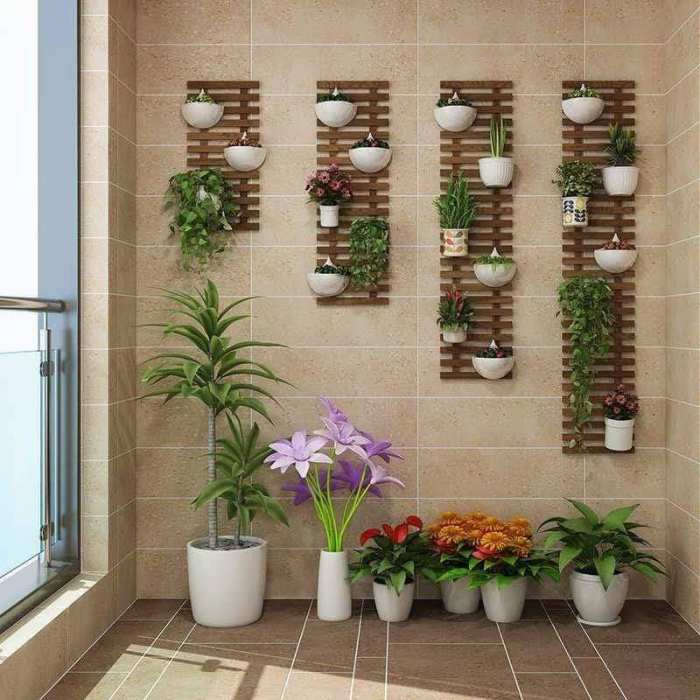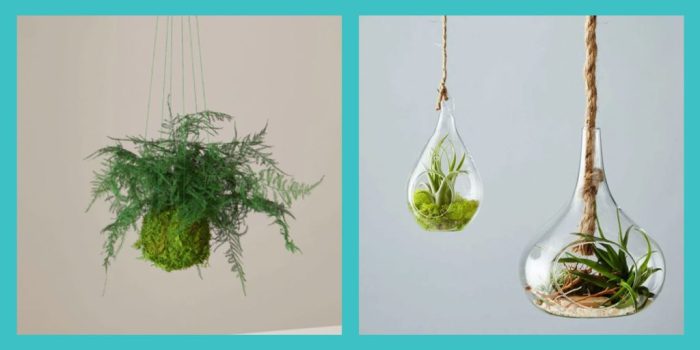Embrace the allure of hanging plants garden design and transform your living spaces into vibrant, green oases. This captivating guide explores the world of hanging plants, offering practical tips, creative inspiration, and expert advice to help you create stunning arrangements that add a touch of nature to any setting.
From lush indoor gardens to enchanting outdoor patios, hanging plants elevate your surroundings with their graceful presence and purifying qualities. Let’s delve into the art of hanging plant design and discover how to harness their beauty and benefits.
Types of Hanging Plants
Hanging plants add a touch of greenery and elegance to both indoor and outdoor spaces. They are versatile plants that can be used to create a variety of looks, from lush and tropical to modern and minimalist.
There are many different types of hanging plants to choose from, each with its own unique characteristics. Some of the most popular varieties include:
Indoor Hanging Plants
- Spider plantsare known for their long, trailing stems and easy care. They prefer bright, indirect light and well-drained soil.
- Pothosis another popular indoor hanging plant that is known for its hardiness and ability to tolerate low light conditions. It has heart-shaped leaves that come in a variety of colors, including green, yellow, and white.
- Fernsare a great choice for adding a touch of greenery to indoor spaces. They prefer humid environments and indirect light.
- String of pearlsis a unique hanging plant that has long, trailing stems with small, round leaves that resemble pearls. It prefers bright, indirect light and well-drained soil.
- Air plantsare a type of epiphyte, which means they grow on other plants or objects. They do not need soil to grow and can be attached to a variety of surfaces, such as wood, rocks, or even other plants.
Outdoor Hanging Plants
- Petuniasare a popular choice for outdoor hanging baskets. They come in a variety of colors and bloom profusely all summer long. They prefer full sun and well-drained soil.
- Impatiensare another good choice for outdoor hanging baskets. They prefer shade or partial shade and well-drained soil.
- Begoniasare a versatile hanging plant that can be grown in both sun and shade. They come in a variety of colors and bloom profusely all summer long.
- Fuchsiasare a beautiful hanging plant that produces showy flowers in a variety of colors. They prefer partial shade and well-drained soil.
- Trailing lantanais a fast-growing hanging plant that produces clusters of small, colorful flowers. It prefers full sun and well-drained soil.
Hanging Plant Arrangements

Hanging plants offer a versatile and space-saving way to add greenery to any indoor or outdoor space. Beyond simply suspending them from hooks, creative arrangements can elevate their visual appeal and transform them into stunning focal points.
Vertical Gardens
Vertical gardens utilize vertical space to create living walls adorned with hanging plants. Macrame hangers, trellises, and grid systems provide support for plants, allowing them to cascade down or grow upwards. This technique is ideal for small spaces or areas with limited natural light, bringing a touch of nature indoors.
Window Treatments
Hanging plants can transform windows into vibrant living curtains. Sheer fabrics or macrame hangers suspended from curtain rods create a soft, ethereal effect. Trailing plants like ivy, ferns, and pothos add a touch of greenery while filtering natural light, creating a serene and inviting atmosphere.
Hanging plants are a beautiful and versatile way to add greenery to your home. They can be used to create a lush indoor jungle, or to add a touch of elegance to a room. If you’re looking for hanging ferns, Bunnings has a great selection of healthy and affordable plants.
Their ferns come in a variety of sizes and styles, so you’re sure to find the perfect one for your home. With a little care, your hanging ferns will thrive and add beauty to your home for years to come.
Hanging plants are a great way to add life and color to any room, and they’re a relatively easy way to care for.
Outdoor Patios
Outdoor patios come alive with the addition of hanging plants. Trellises and arbors provide support for climbing vines, creating a lush canopy overhead. Macrame hangers and hanging baskets add a touch of bohemian flair, while trailing plants like petunias, begonias, and trailing rosemary provide color and fragrance.
Plant Care and Maintenance: Hanging Plants Garden Design
Maintaining the health and beauty of hanging plants requires proper care and attention. Regular watering, fertilization, and pest control are essential for their well-being.
Watering techniques vary depending on the plant species and environmental conditions. As a general rule, water when the top inch of soil feels dry to the touch. Avoid overwatering, as it can lead to root rot.
Fertilize hanging plants monthly during the growing season with a balanced liquid fertilizer diluted to half strength. During the dormant season, reduce fertilization to once every two months.
Pest Control
Hanging plants are susceptible to pests such as aphids, mealybugs, and spider mites. To prevent infestations, regularly inspect plants for signs of pests and treat them promptly. Organic insecticidal soap or neem oil can be effective in controlling pests without harming the plant.
Common Challenges
One common challenge with hanging plants is providing adequate sunlight. Choose plants that tolerate partial shade or indirect sunlight if they will be hanging in areas with limited natural light.
Another challenge is maintaining moisture levels. Hanging plants dry out more quickly than those in containers on the ground. Increase humidity around plants by misting them regularly or placing them on a tray filled with pebbles and water.
Hanging Plant Design Principles

Hanging plants offer a unique opportunity to add vertical interest and greenery to any space. To create visually stunning arrangements, it’s important to consider the principles of garden design.Scale and proportion are crucial in hanging plant design. The size of the plants and their containers should be proportionate to the space they occupy.
Oversized plants can overwhelm a small area, while undersized plants may get lost in a large space.Color theory plays a significant role in creating harmonious arrangements. Consider the colors of the plants, their containers, and the surrounding environment. Complementary colors, such as red and green, create a striking contrast, while analogous colors, such as blue and purple, provide a more subtle effect.
Placement and Grouping, Hanging plants garden design
The placement of hanging plants is crucial to their overall impact. Group plants with similar needs and aesthetics together. For example, ferns and mosses thrive in humid environments, while succulents prefer drier conditions.Consider the height of the plants and the length of their vines when arranging them.
Taller plants with long vines can create a dramatic cascading effect, while shorter plants with compact growth habits can add a touch of whimsy.
Hanging plants are a great way to add life and greenery to your home. They can be used to create a variety of different looks, from bohemian to modern. If you’re looking for a unique way to display your plants, consider using macrame hanging pots . These pots are made from knotted cords and can be hung from the ceiling or a wall.
They’re a great way to add a touch of texture and interest to your home décor. Once you have your hanging pots, you can fill them with your favorite plants and enjoy the beauty of nature indoors.
Containers and Accessories
The choice of containers can enhance the visual appeal of hanging plants. Choose containers that complement the plants and the surrounding decor. Consider the material, shape, and size of the containers.Accessories, such as plant hangers and trellises, can add interest and support to hanging plants.
Plant hangers come in a variety of styles, from simple macrame cords to elaborate metal chains. Trellises provide support for climbing plants, allowing them to reach their full potential.
Hanging plants add a touch of greenery and vertical interest to any garden design. For those seeking low-maintenance options, bunnings hanging succulents offer a wide selection of drought-tolerant varieties that thrive in hanging baskets or wall planters. By incorporating these hardy plants, homeowners can create stunning vertical gardens that require minimal watering and upkeep, enhancing the overall aesthetic appeal of their outdoor spaces.
DIY Projects for Hanging Plant Structures

Creating your own hanging plant structures can be a fun and rewarding way to add some greenery to your home. Here are a few simple DIY projects that you can try:
Using wood:You can create a simple hanging planter by cutting a piece of wood to the desired size and shape. Drill holes in the wood for drainage and suspension, and then attach a chain or rope to hang it from the ceiling.
Repurposing household items
You can also repurpose household items into unique plant holders. For example, you can use an old basket, jar, or even an old tire to create a hanging planter. Just make sure to drill holes in the bottom for drainage.
Final Review

Whether you’re a seasoned gardener or just starting your green journey, hanging plants garden design empowers you to bring the outdoors in and create spaces that inspire tranquility, creativity, and a deep connection with nature. Embrace the transformative power of hanging plants and let your imagination soar.
Key Questions Answered
What are the best hanging plants for beginners?
Pothos, spider plants, and philodendrons are excellent choices for beginners due to their hardiness and low maintenance requirements.
How often should I water my hanging plants?
Watering frequency depends on factors like plant type, pot size, and environmental conditions. Check the soil moisture regularly and water when the top inch feels dry.
Can I hang plants outside in winter?
Some hanging plants can tolerate cold temperatures, but most should be brought indoors or protected from frost during winter.